Raspberry plant is a bush much appreciated for its tasty small red fruits: raspberries. And what a delight for the papillae of young and old gardeners to taste them fresh straight from garden. Raspberries are perfect for making many desserts, such as tarts, cakes, coulis, compote, sorbet, and also a delicious spreadable jam. Follow our recipe to make a delicious homemade raspberry jam step by step.
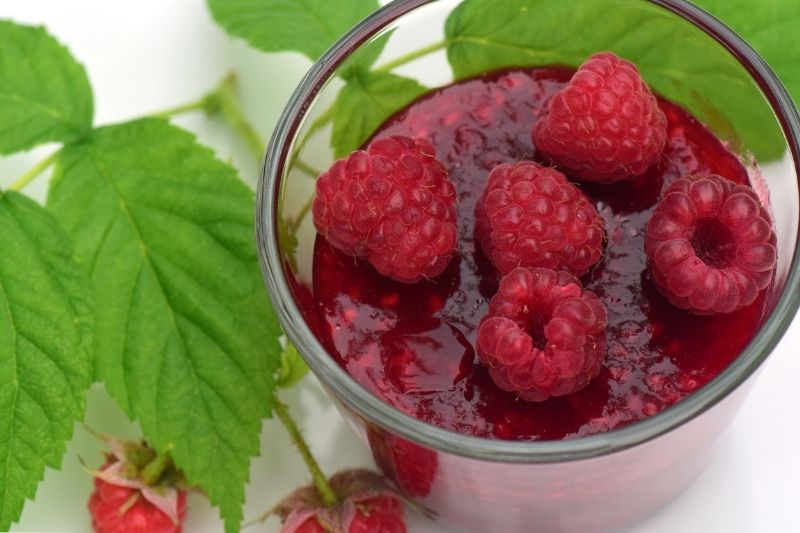
When, how and where to harvest raspberries?
When to harvest?
Harvest period for raspberries varies depending on variety. For non-perpetual raspberry plants, picking takes place from June until early August. For perpetual varieties, a second harvest occurs in September and October. Note that for a young raspberry plant planted in the same year, you generally have to wait until following summer before getting a first harvest.
How to harvest raspberries?
Always pick fruit that has had no treatment. Picking is very easy and done by hand. Choose only fully ripe raspberries and leave the others in place. Simply pull the small fruit downwards. If ripe, it will detach easily leaving a small white cone on its branch.
Raspberries do not ripen all at once and have a very short shelf life. It is therefore not always easy to harvest enough fruit at once to make jam. You can freeze them gradually as you pick.
Tip: to preserve flavour and texture of raspberries, place them in refrigerator for one hour before freezing.
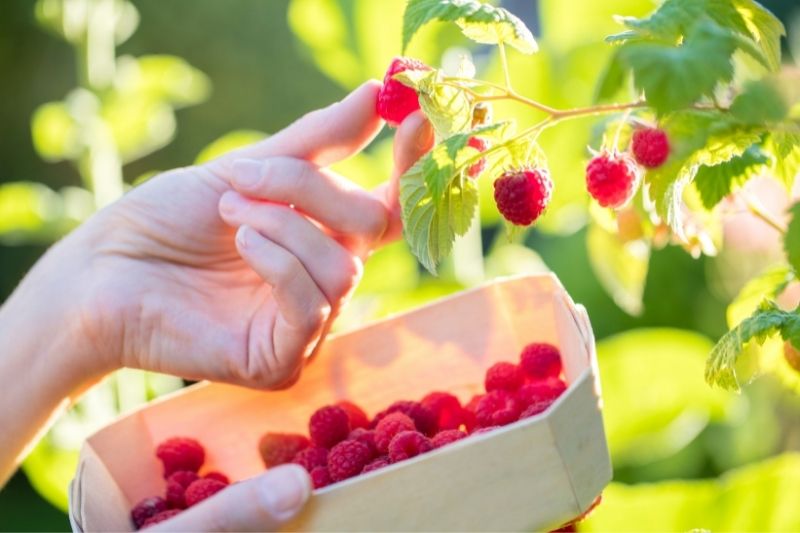
Which raspberry plant variety to choose?
Easy to to grow, raspberry plant is increasingly present in gardens. There are perpetual and non-perpetual varieties, with red, golden and even black fruits. Here is a small selection of our favourites:
- The raspberry plant 'Magnific Delbard' is a non-perpetual variety. It produces very large dark red fruits, aromatic and very flavoursome.
- The raspberry plant 'Twotimer Sugana Red' is a perpetual variety. It yields large dark red fruits, firm and of good flavour quality.
- The dwarf raspberry plant 'Little Sweet Sister' is a small variety perfect for growing in a pot on a terrace or balcony. Perpetual and thornless, it produces dark red, sweet fruits.
- The raspberry plant 'Fall Gold' is a perpetual variety distinguished by its yellow fruits, aromatic, sweet and very flavoursome.
→ Find all our raspberry plant varieties here.
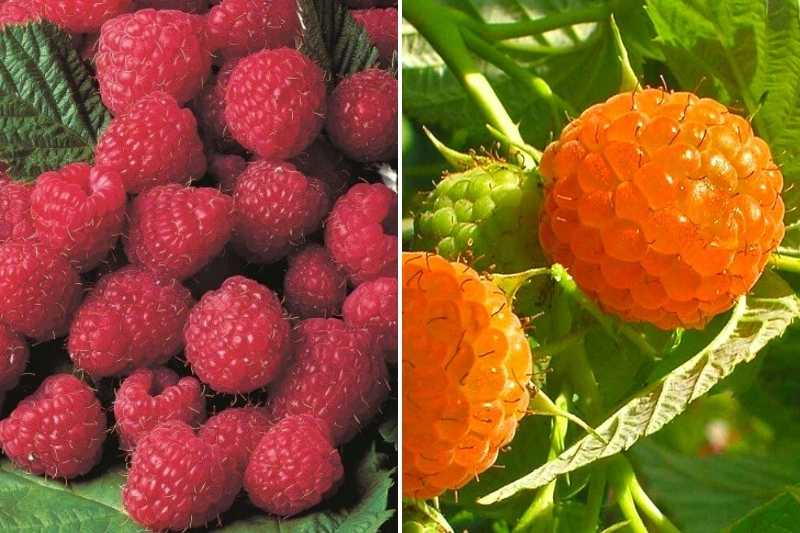
On the left, the raspberry plant 'Magnific Delbard' and on the right the raspberry plant 'Fall Gold'
Raspberry jam recipe
Ingredients:
- 1 kilogram raspberries from garden, untreated.
- 1 kilogram jam sugar or granulated sugar or white sugar.
- Facultative :
- 50 ml lemon juice or one organic lemon
- 1 sachet vanilla sugar or one vanilla pod
Cooking time:
20 minutes
Recipe:
Preamble: remember to sterilise jars well before starting.
- 1/ Put raspberries into a large saucepan, stockpot or jam pan. No need to rinse them, you might damage them.
- 2/ Add granulated sugar, lemon juice and vanilla.
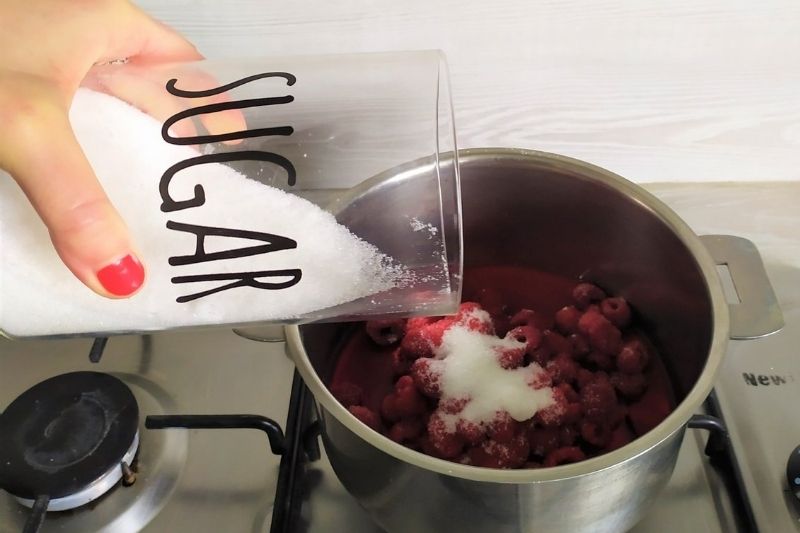
- 3/ Place pot over heat and bring to the boil, stirring frequently with a wooden spoon. Simmer gently for 20 minutes, stirring from time to time. If using sugar with gelling agent, reduce cooking time to 8 minutes.
- 4/ If scum forms on surface, remove it with a skimmer.
- 5/ To check consistency, pour a small spoonful of jam onto a plate, then place it in refrigerator for 2 minutes. Tilt the plate. If jam is still too runny and flows quickly, cook for another 5 minutes. Repeat until jam flows slowly from plate.
- 6/ Ladle jam into sterilised jars without delay. Make sure to fill jars to the top, then screw lids on. Immediately turn jar upside down onto a tea towel and let them cool.
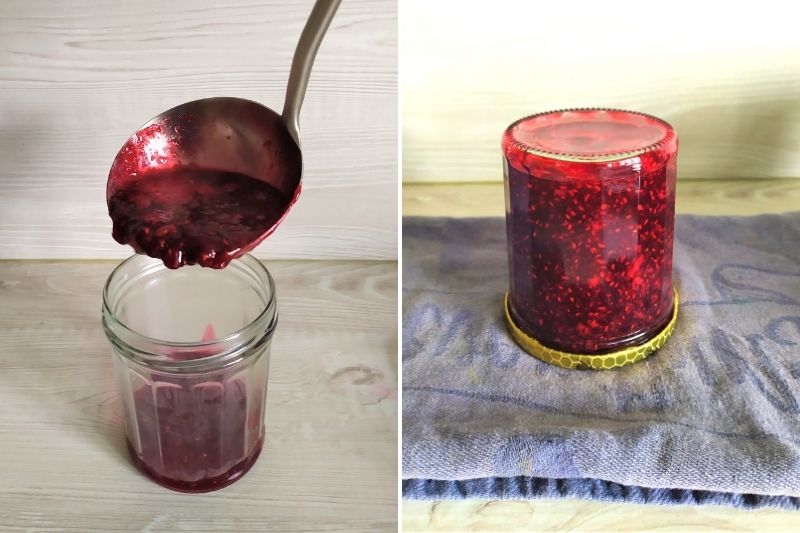
- 7/ Store jars in a dark room at a stable temperature.
- 8/ Once opened, keep jar in refrigerator.
My tips:
- If you do not like large pieces of fruit, consider blending your jam a few minutes before end of cooking. But generally raspberry jam is very homogeneous and does not need blending if you respect 20 minutes cooking time.
- If you want to remove small pips, pass fruit through a food mill before starting. Then follow recipe steps and you will obtain a raspberry jelly.
Recipe ideas: you can add redcurrants, blackcurrants, strawberries and some pitted cherries to make a delicious mixed red fruit jam. I also recommend raspberry-rhubarb mix, a real treat!
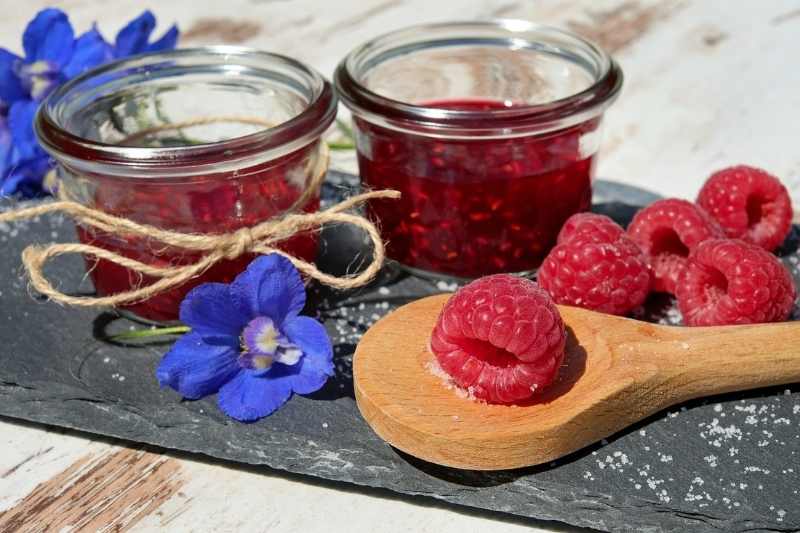
Benefits of raspberries
Raspberry apparently contains fibre, vitamin E, vitamin C, iron and minerals.
Learn more:
- Find our factsheet to know all about raspberry plant: planting, pruning and care
- Want to plant small fruits in your garden? Discover our raspberry plant varieties
- Need help choosing? Read our raspberry plant buying guide
- Learn how to plant raspberry plants in bare roots.
- Find all our advice to to grow a raspberry plant in a pot
- Discover Olivier's video tips to choose a raspberry plant :































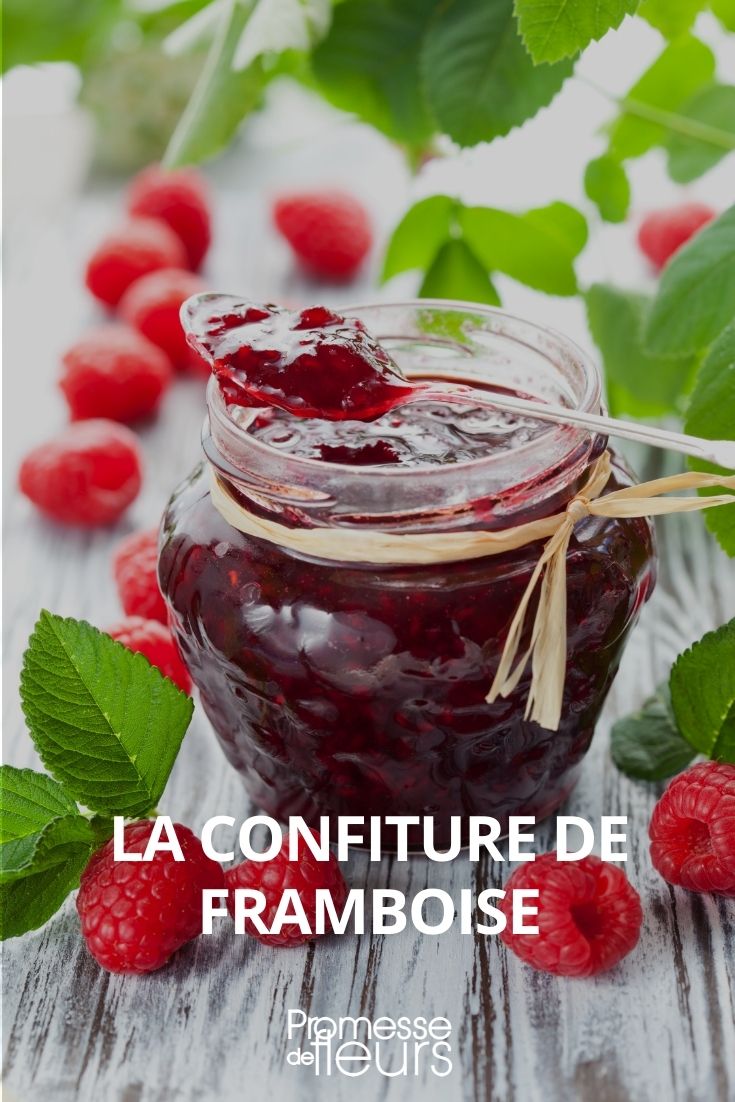
Comments